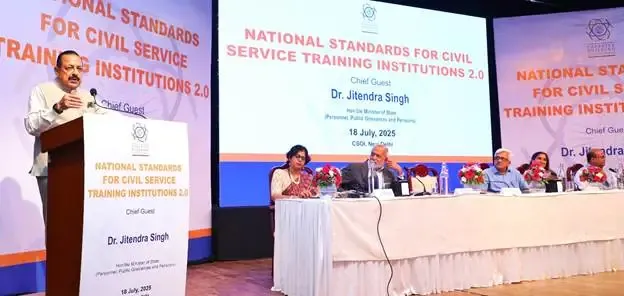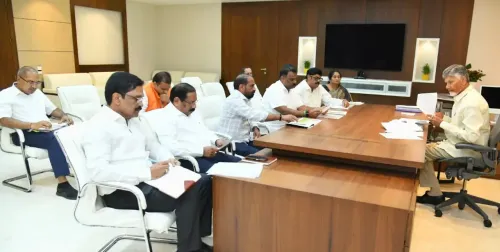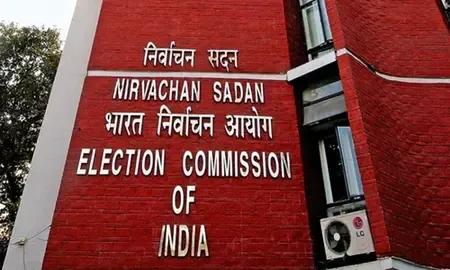What is NSCSTI 2.0 and How Will It Enhance India's Civil Services Training?

Synopsis
Key Takeaways
- NSCSTI 2.0 enhances civil service training.
- It integrates modern technologies and practices.
- Over 195 CSTIs have received accreditation.
- Focus on citizen-centric governance.
- Promotes cross-learning among training institutes.
New Delhi, July 18 (NationPress) Union Minister of State (Independent Charge) for Personnel, Public Grievances and Pensions, Dr. Jitendra Singh, unveiled the National Standards for Civil Service Training Institutes 2.0 (NSCSTI 2.0) on Friday, representing a crucial advancement in fortifying India’s civil services training ecosystem to cultivate a future-ready, citizen-focused civil service.
The administration led by Prime Minister Narendra Modi has dismantled unnecessary barriers between the public and private sectors, allowing for the integration of the finest practices from various fields. This framework is a manifestation of that vision.
Dr. Singh underscored the importance of offering tailored training modules to scientific institutions, highlighting the necessity of administrative readiness alongside technical skills.
The enhanced NSCSTI 2.0 framework introduces a more sophisticated, inclusive, and future-oriented methodology for civil services training. It has been simplified, with the number of evaluation metrics reduced from 59 to 43, ensuring clearer and more focused outcome-based assessments.
This framework is informed by practical experience, drawing from consultations with over 160 Civil Service Training Institutes (CSTIs), assessors, and subject matter experts, thus addressing real-world training challenges and requirements. Its inclusive nature allows adaptability for training institutes across all government tiers—Central, State, and Urban Local Bodies (ULBs).
Recognizing the evolving educational landscape, the framework is also digitally integrated, adopting hybrid learning models and AI-enhanced training strategies.
Significantly, it is future-oriented, incorporating progressive elements such as Indian Knowledge Systems (IKS), the Karmayogi Competency Model (KCM), and the Amrit Gyaan Kosh (AGK), thereby aligning with India’s aim of establishing a competent, future-ready, and citizen-centric civil service.
Dr. Singh noted the global interest in India's civil service reform model, mentioning that countries like Bangladesh, South Africa, and the Maldives have expressed interest in studying Mission Karmayogi.
“This is a testament to India’s leadership in governance reform,” he remarked.
The NSCSTI 2.0 framework also boosts policy transparency, reaffirming the Indian government’s dedication to institutional excellence and long-term capacity enhancement. It serves as a robust motivational instrument for CSTIs, urging them to adopt innovation, implement best practices, and strive for continuous improvement.
Furthermore, it raises public awareness by positioning accreditation as not merely a compliance obligation but as a significant driver of quality and performance. With the reactivation of the accreditation portal, the framework guarantees full operational readiness for a transparent and efficient accreditation process.
Additionally, it promotes cross-learning, allowing training institutes to leverage shared experiences and success narratives from top-performing CSTIs nationwide.
In just two years, over 195 CSTIs have already achieved accreditation under NSCSTI. The upgraded version builds on real-time feedback and the Capacity Building Commission’s (CBC) principle of participatory governance.
Developed by the CBC, this revamped framework signifies a substantial leap in India’s mission to cultivate a future-ready civil service.
Dr. Singh highlighted how this framework supports cooperative and competitive federalism, empowering institutes to assess and enhance their capabilities.
“Much like the Aspirational Districts Programme enabled underperforming districts to exceed expectations, NSCSTI 2.0 motivates CSTIs to reflect, innovate, and pursue excellence,” Dr. Singh noted.









